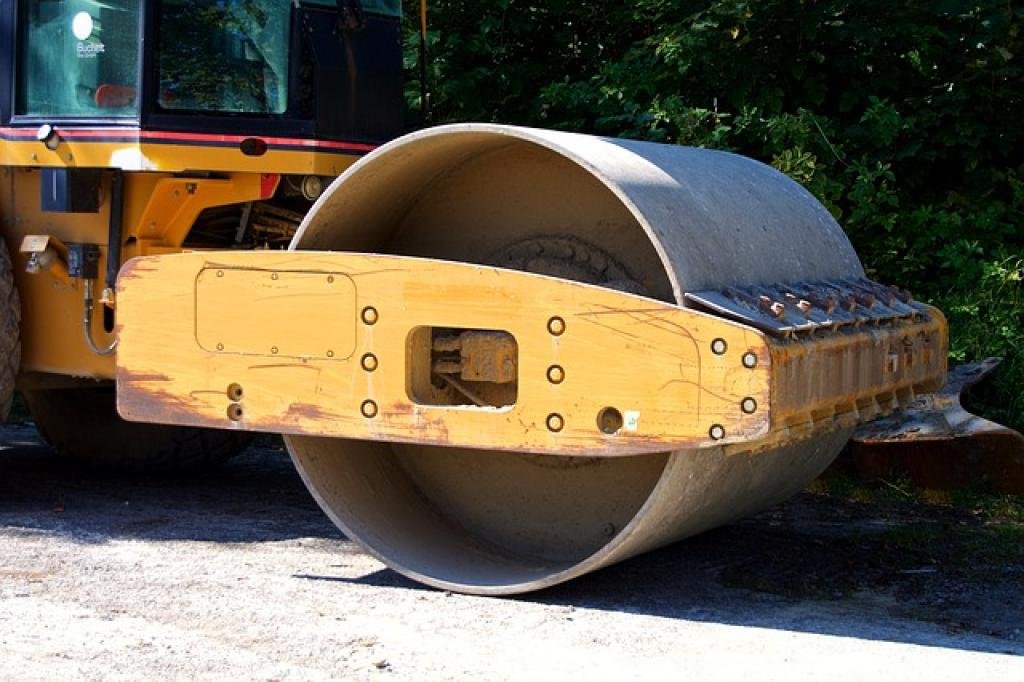We independently test and review fitness products using a research-based approach. If you buy through our links, we may earn a small commission at no extra cost to you. Read our Disclosure
Back pain can be an unwelcome guest, disrupting your daily activities and overall well-being. If you’ve ever experienced that nagging sensation, you’re not alone—millions suffer from it daily. While there are countless remedies out there, one simple tool is gaining traction for its effectiveness: the ergonomic foam roller.
This guide will introduce you to the world of foam rolling and explore how it can be a game-changer for your back pain relief. Discover the benefits of using an ergonomically designed roller tailored to your unique needs and learn the best techniques to maximize your results.
Say goodbye to discomfort as we delve into the science behind these rollers and unveil tips to incorporate them smoothly into your routine. Whether you’re a newbie or a seasoned roller, this guide is packed with insights to help you roll your way to a pain-free life.
Easing Back Pain with an Ergonomic Foam Roller
An ergonomic foam roller is designed with your body’s contours in mind, making it a fantastic tool for targeting troublesome spots with precision. The unique shape assists in applying just the right amount of pressure to relieve tension and promote circulation in your back muscles.
Using a foam roller can help release myofascial tightness by applying sustained pressure to the connective tissues. This technique enhances flexibility, reduces stiffness, and improves range of motion—all essential in reducing back pain.
To get started, all you need is a few minutes each day. Begin by positioning the roller under your back, lying comfortably with knees bent. Gently roll up and down, focusing on areas that feel particularly tight or sore. This simple routine can dramatically lessen discomfort over time.
Listen to your body and adjust the pressure as needed—lighten up if it feels too intense and gradually increase as your muscles adapt. With consistent use, you’ll find that an ergonomic foam roller can be a vital companion in maintaining a healthier, happier back.
Choosing the Right Foam Roller Size and Density
Selecting the perfect foam roller can make a significant difference in your back pain relief routine. With various sizes and densities available, it’s important to know what works best for your needs.
Finding the Right Size
The size of a foam roller can affect its versatility and the areas it can target. Longer rollers, typically around 36 inches, are ideal for full-back coverage and ease of use for beginners. Shorter rollers, roughly 12 to 24 inches, provide greater maneuverability for targeting specific spots.
Selecting the Ideal Density
Density levels range from soft to firm, each offering different pressure intensities. Beginner-friendly, softer rollers provide a gentle massage, making them less painful while still effective. For more intense relief, firmer rollers penetrate deeper into muscle tissue, suitable for experienced users.
When choosing, consider your pain tolerance and experience level. Starting with a medium-density roller allows for a balanced approach, offering both comfort and effectiveness. Over time, as your body adjusts and your technique improves, you can experiment with different sizes and densities to see what feels best.
Having the right foam roller ensures that each session is effective and tailored to your comfort, paving the way for lasting back pain relief.

Effective Foam Rolling Techniques for Back Pain Relief
Achieving the best results with foam rolling involves using the right techniques. Proper execution not only enhances relief but also prevents potential injury.
Start with the upper back by placing the roller under your shoulder blades. Cross your arms over your chest and gently roll from the upper back to mid-back, using your feet to control the movement. This helps alleviate tension in the upper spine.
Rolling the Lower Back
To target the lower back, shift the roller beneath your lumbar region. Engage your core and use your legs to roll slowly, focusing on tender spots. Avoid applying direct pressure on the spine itself—roll slightly to one side to prevent discomfort and strain.
Incorporate a side-to-side motion for a comprehensive approach. As you roll, remember to breathe deeply and relax your muscles, allowing the roller to work effectively.
For those everyday knots, consider pauses at tight spots. Hold for 20-30 seconds to gently release tension, then continue rolling. This method helps break down fascia and improve flexibility.
By practicing these techniques regularly, foam rolling can become an essential part of your routine, leading to significant back pain reduction and overall improved physical well-being.
Incorporating Foam Rolling into Your Daily Routine
Incorporating foam rolling into your daily routine can be a seamless way to nurture your back health. By setting aside just 10 to 15 minutes a day, you can experience long-term benefits that extend beyond immediate pain relief.
Begin your morning with a quick session to kick-start circulation and prepare your body for the day ahead. A brief roll before bed can help relax your muscles and de-stress, fostering better sleep.
Link foam rolling with other habits, like practicing it before or after your regular workout. This association makes it easier to remember and integrate into your schedule, ensuring it’s a consistent practice.
Many find it effective to foam roll at the same time each day. Consistency not only helps in creating a habit but also maximizes muscle recovery and flexibility.
Make use of moments that might otherwise be downtime—like watching TV or listening to a podcast. Not only will you increase productivity, but you’ll also make the process more enjoyable.
By weaving foam rolling seamlessly into daily life, you’ll cultivate a sustainable practice that supports a pain-free back and enhances your overall well-being.
Complementing Foam Rolling with Stretches and Exercises
Foam rolling works wonders on its own, but combining it with stretches and exercises can further enhance your back pain relief journey. This holistic approach promotes flexibility, strength, and overall muscle health.
After a foam rolling session, your muscles are primed for stretching. Gentle back stretches, such as the cat-cow or child’s pose, complement the effects of rolling by extending your range of motion and maintaining muscle elasticity.
Enhancing Mobility with Exercises
Incorporating exercises like bridges and planks can help build core strength, which is vital for supporting your back. A strong core reduces the strain on your back muscles, preventing future pain episodes.
Yoga and Pilates are excellent companions to foam rolling. These practices focus on controlled movements and breathing, aiding in muscle relaxation and improving posture, which are both crucial for minimizing back discomfort.
When combining these methods, listen to your body’s signals. With each practice, aim for a gentle push without crossing into discomfort. The synergy between foam rolling, stretching, and exercise fosters lasting benefits, ensuring a stronger, more resilient back.
As you embrace this comprehensive routine, you’ll find relief from back pain and a refreshing boost in your overall physical health.
Understanding the Benefits of Using an Ergonomic Foam Roller
An ergonomic foam roller offers unique advantages that extend beyond traditional rollers, making it a valuable tool for back pain relief. Its distinct design tailors to the body’s natural curves, providing targeted pressure that enhances muscle recovery and relaxation.
One primary benefit is improved blood circulation. As you roll, the targeted pressure stimulates blood flow, delivering essential nutrients and oxygen to your muscles, accelerating healing and reducing inflammation.
Stress Reduction and Relaxation
Beyond physical relief, foam rolling can also aid in stress reduction. The gentle pressure encourages relaxation, releasing both physical and mental tension, which can help alleviate stress-related aches and pains.
Ergonomic foam rollers also enhance your flexibility and mobility. By regularly using one, you can maintain and even increase your range of motion, promoting freedom of movement and reducing the risk of future injuries.
In the long term, consistent use of an ergonomic foam roller can lead to improved posture, as loosened muscles can help realign the spine. This holistic improvement not only alleviates existing pain but also contributes to better overall health.
Embracing these benefits, you’ll find an ergonomic foam roller to be an indispensable part of your path to a pain-free and active lifestyle.
Recovery and Prevention Strategies for Long-Term Back Pain Relief
Achieving long-term relief from back pain goes beyond immediate solutions—it involves adopting a comprehensive strategy for both recovery and prevention. One key element is maintaining a consistent routine with your ergonomic foam roller, keeping muscles supple and tension-free.
Incorporate regular physical activity to strengthen the back and core muscles, which serve as essential support for your entire body. Low-impact exercises, like walking or swimming, can be particularly beneficial and easy on the joints.
Mindful posture practices are crucial. Whether sitting, standing, or moving, maintaining alignment reduces strain and helps distribute weight evenly. Ergonomic office setups or mindful sitting adjustments can contribute significantly to reducing back stress.
Restorative practices like meditation or mindfulness can also play a vital role. These techniques lower stress, often a contributing factor to muscle tension and pain.
Nutrition shouldn’t be overlooked either. A diet rich in anti-inflammatory foods, like leafy greens and omega-3 fatty acids, supports recovery and prevents further inflammation, easing the burden on your back.
By integrating these strategies, you create a supportive environment for your back, leading to improved function and long-term relief from pain. This proactive approach helps pave the way to a healthier lifestyle, free from the limitations of persistent back discomfort.
The Bottom Line: Achieving Lasting Relief with an Ergonomic Foam Roller
Achieving long-term relief from back pain isn’t just a dream—it’s within reach, especially with the help of an ergonomic foam roller. By integrating this tool into your daily routine, you can unlock a multitude of benefits for your back health.
Through targeted pressure and design tailored to your body’s contours, these rollers offer both immediate pain relief and long-term advantages. When paired with stretches, exercises, and a mindful approach to posture, they can help transform how you manage back pain.
Remember, consistency is key. Making foam rolling a regular part of your life can help maintain muscle flexibility and keep discomfort at bay. As you become more attuned to your body’s needs, you’ll find that incorporating additional practices, such as mindfulness and proper nutrition, further enhances your journey to freedom from pain.
Not to mention, with the ability to prevent further issues, you’re investing in not just relief but also the future health of your back. This proactive approach empowers you to take charge of your well-being, supporting an active and fulfilling lifestyle.
In summary, the ergonomic foam roller is not just a tool but a gateway to a healthier back. Embrace it as part of a broader strategy to break the cycle of pain and cultivate enduring relief. With dedication and the right techniques, a pain-free life is just a roll away.



